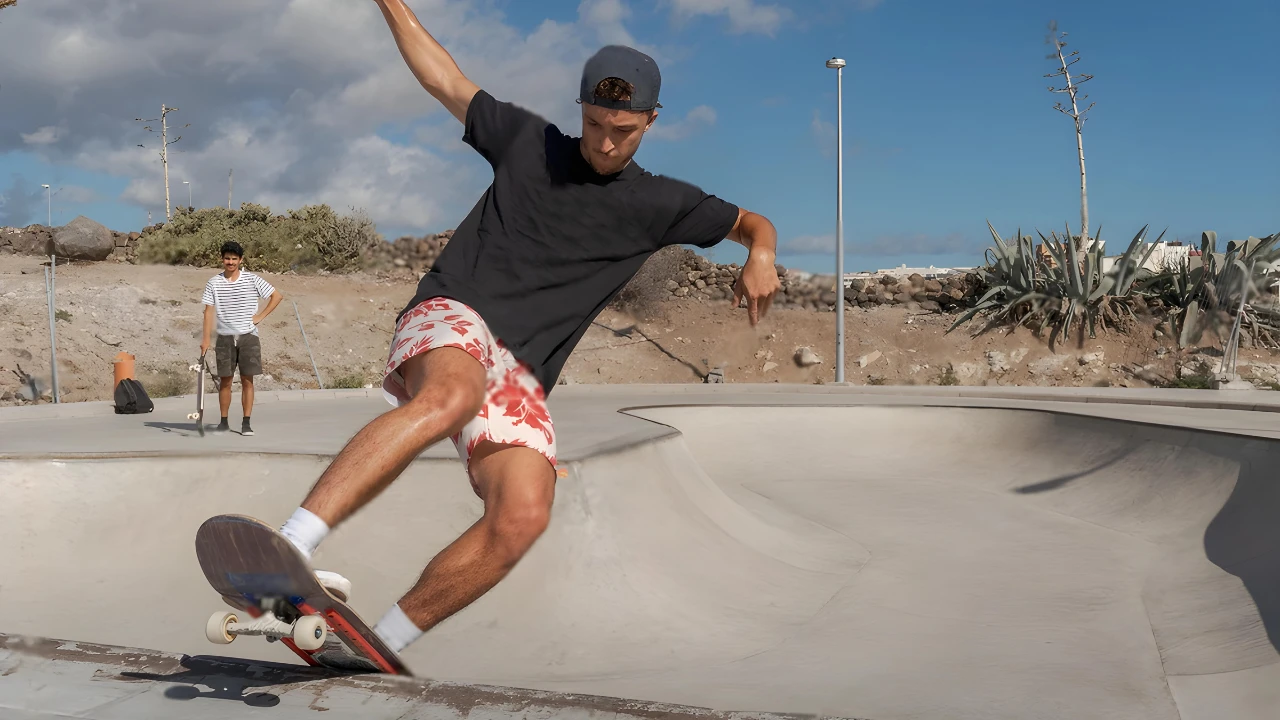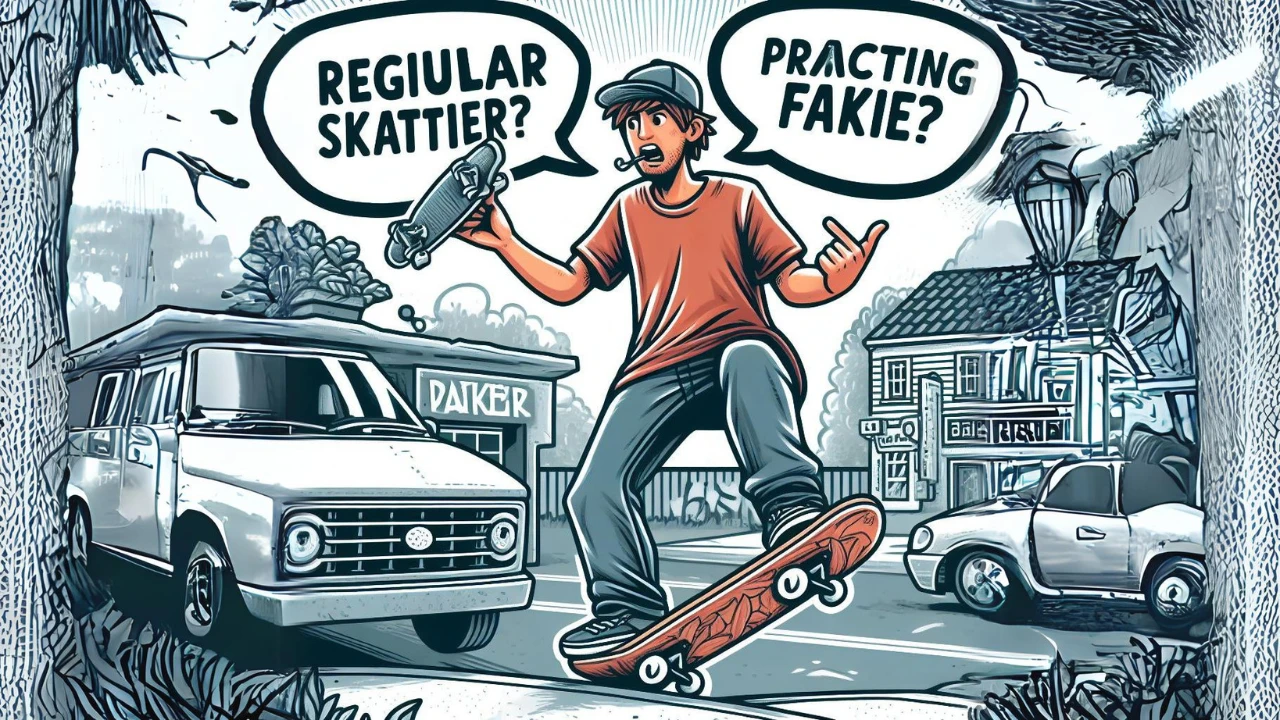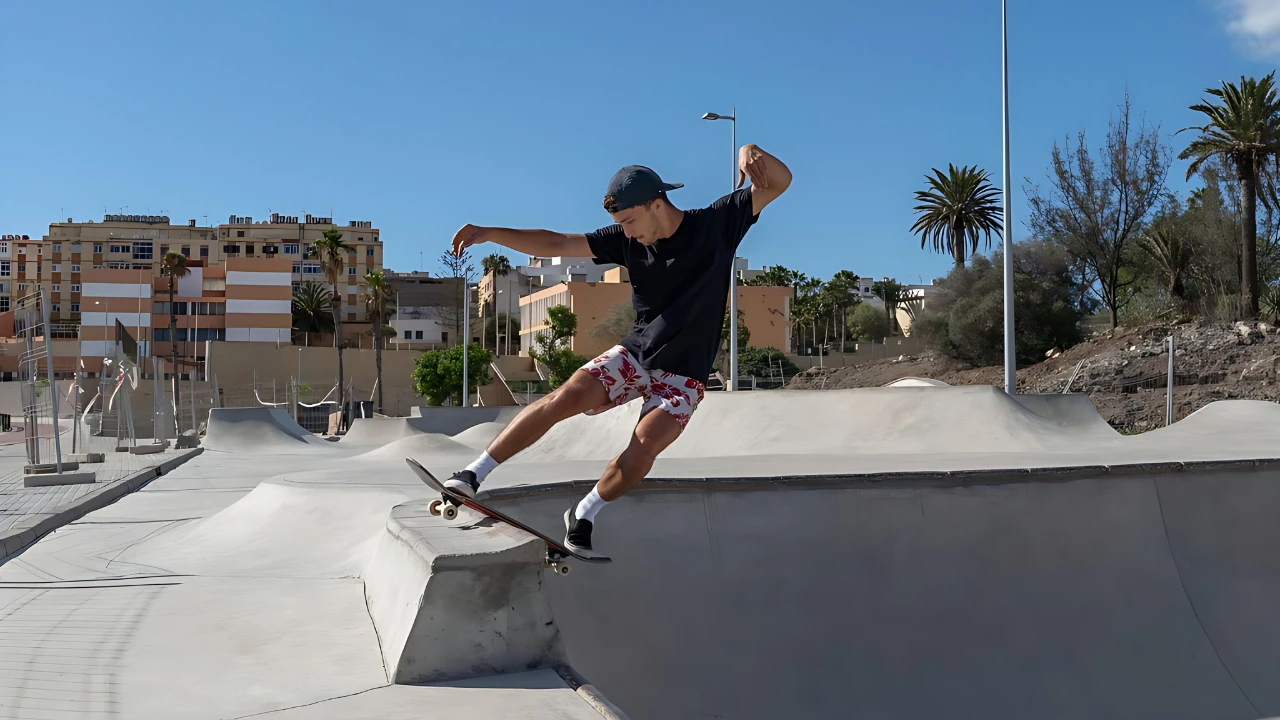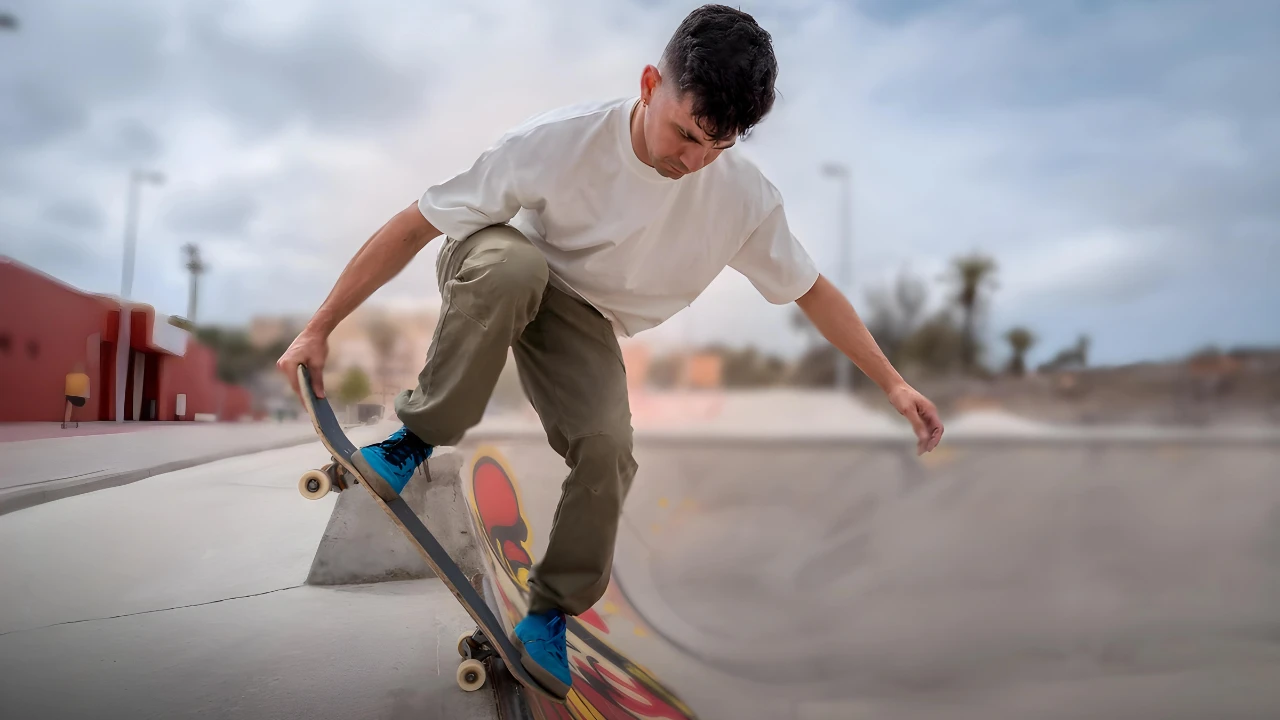Diving into the world of skateboarding reveals a sport rich in creativity, skill, and a unique language that binds its community. One term that often captures the curiosity of newcomers and seasoned skaters alike is “what does fakie mean in skateboarding.” This concept is not just a trick or stance; it’s a doorway to understanding the sport’s complexity and the fluidity it demands from its practitioners.
As we embark on this journey to unravel the mysteries of skateboarding, especially through the lens of mastering fakie maneuvers, we’ll explore how this technique opens up a new realm of possibilities, challenges, and styles for skaters around the globe.
Whether you’re a novice eager to learn the basics or an experienced skater looking to add depth to your repertoire, understanding the essence of fakie is crucial in the pursuit of skateboarding mastery.
Table of Contents
The Essence of Fakie: A Skateboarding Staple
At its core, the term fakie refers to skating in a backward motion, with the skateboarder moving tail first, contrary to their usual stance direction. This technique forms the foundation for numerous complex tricks, making it a crucial skill in a skateboarder’s arsenal. Understanding what does Fakie mean in Skateboarding and mastering the fakie can significantly enhance a skater’s versatility and style.
Fakie Fundamentals: The Building Blocks of Mastery
Embarking on the journey to fakie mastery requires grasping its fundamentals. Initially, skaters must learn to maintain balance and control while moving in a direction opposite to their natural stance. This foundational skill paves the way for executing more intricate maneuvers, such as fakie ollies and fakie flips, with precision and flair.
Transition Techniques: Elevating Your Fakie Game
Transitioning smoothly between a standard stance and fakie is pivotal for executing this maneuver seamlessly. Skaters develop this skill through continuous practice, focusing on foot placement and body posture adjustments. Mastery in transitions allows for the execution of fluid, dynamic skateboarding sequences that captivate and impress.
Fakie Mastery: Beyond the Board
The journey to mastering the fakie transcends technical skill, touching on aspects of resilience, creativity, and community. Skaters learn to embrace challenges, experiment with new ideas, and share their achievements with fellow enthusiasts. This collective experience fosters a sense of belonging and progression within the skateboarding community, enriching the sport’s culture.
Advanced Fakie Tricks: Expanding the Realm of Possibilities

Incorporating advanced fakie tricks into your skateboarding repertoire not only challenges your skills but also significantly enhances your style and versatility. These maneuvers, executed while moving in reverse, demand a higher level of balance, coordination, and technical proficiency. Below are some advanced fakie tricks that open up a realm of possibilities for those looking to elevate their skateboarding:
- Fakie Kickflip: This trick involves flipping the skateboard 360 degrees along its axis while in a fakie stance. It requires precise foot placement and timing to execute correctly.
- Half-Cab: Named after skateboarding legend Steve Caballero, the Half-Cab is a 180-degree turn performed in a fakie stance. Mastering this move lays the groundwork for more complex rotational tricks.
- Fakie Bigspin: The Fakie Bigspin combines a body rotation with the skateboard’s spin. Skaters execute a 360-degree board spin while turning their body 180 degrees in the same direction, all in a fakie stance.
- Fakie Varial Heelflip: This trick adds a layer of complexity by combining a heelflip with a 180-degree board spin. The execution requires adept footwork and precise timing to land successfully.
- Fakie Tre Flip (360 Flip): A highly advanced trick, the Fakie Tre Flip involves a 360-degree board spin combined with a kickflip. This trick is a testament to a skater’s skill and precision, demanding perfect synchronization of movements.
- Fakie Ollie North: An extension of the basic fakie ollie, this trick involves kicking the front foot off the nose of the board mid-air to extend the legs in opposite directions. It’s a stylish maneuver that tests a skater’s ability to control and manipulate the board in air.
Why Practice Advanced Fakie Tricks?
- Skill Enhancement: Mastering these tricks significantly improves overall skateboarding skills, including balance, timing, and board control.
- Creative Expression: Each advanced fakie trick offers a unique way to express creativity and style on the board.
- Versatility: Being proficient in fakie tricks allows skaters to approach obstacles and features from new angles, opening up a broader range of possibilities.
Tips for Mastering Advanced Fakie Tricks
- Start with the Basics: Ensure you’re comfortable with basic fakie maneuvers before attempting more advanced tricks.
- Practice Regularly: Consistency is key. Regular practice sessions help build muscle memory and confidence.
- Watch and Learn: Study videos of skilled skaters executing these tricks. Pay attention to their foot placement, body movement, and timing.
- Safety Gear: Always wear appropriate safety gear, including helmets and pads. Advanced tricks come with a higher risk of falls and injuries.
- Seek Feedback: Don’t hesitate to ask for tips and feedback from more experienced skaters. Learning from others can accelerate your progress.
By dedicating time and effort to mastering these advanced fakie tricks, skaters can push their limits, showcase their skills in new and exciting ways, and gain a deeper appreciation for the art of skateboarding.
Skateboarding vs. Fakie – What Does Fakie Mean in Skateboarding

Skateboarding, a dynamic and multifaceted sport, captivates enthusiasts with its array of tricks, styles, and cultural significance. Within this vibrant world lies the concept of the fakie, often misunderstood by those new to skateboarding. To clarify, it’s essential to explore the fundamental differences between skateboarding as a whole and the fakie maneuver specifically.
Skateboarding: A World of Possibilities
Skateboarding encompasses the entire scope of riding a skateboard, including various styles such as street, vert, and park. It involves performing tricks, navigating obstacles, and cruising. The sport demands balance, agility, and creativity, offering practitioners an expansive canvas for self-expression and innovation. Skateboarding’s essence lies in its versatility, allowing riders to adapt and evolve their techniques across different terrains and contexts.
Fakie: A Specific Stance and Technique
Fakie, on the other hand, refers specifically to a skateboarding stance and technique where the skater moves backward, with the tail of the skateboard leading. This approach contrasts with a regular stance, where the skater moves in the direction their feet and body are naturally positioned to face. The fakie is more than just a way of riding; it’s a foundational technique that enables skaters to perform a wide range of tricks in a reversed stance, adding complexity and variety to their skateboarding repertoire.
The Technical Nuance
The difference between skateboarding and fakie can be seen as the difference between the general act of riding a skateboard and a specific technique used within that broader context. While skateboarding includes every aspect of riding, the fakie zeroes in on a particular way of moving that challenges the skater’s balance and coordination in unique ways. This technique requires skaters to adjust their body mechanics and perception, as moving in reverse can feel counterintuitive compared to regular forward motion.
Expanding the Trick Arsenal
Incorporating fakie into skateboarding allows skaters to expand their trick arsenal dramatically. Tricks performed in a fakie stance often have different names and difficulty levels compared to their regular stance counterparts. Mastery of the fakie stance can unlock new dimensions in a skater’s ability, enabling them to approach obstacles and perform tricks with renewed creativity and style.
WHICH ONE IS BETTER FOR PRACTICE

When considering whether skateboarding in a regular stance or practicing fakie is better for practice, it’s crucial to understand that both methods play pivotal roles in developing a skateboarder’s skills. Each approach offers unique benefits and challenges that contribute to a well-rounded skateboarding skill set. Let’s delve into the advantages of both to determine which might be better for practice, depending on your goals and current skill level.
Practicing in a Regular Stance
Starting with a regular stance, where you skate in the direction that feels natural and comfortable, is essential for beginners. This stance is fundamental to mastering balance, control, and the basics of skateboarding. It allows skaters to:
- Build Confidence: Learning to skate in a regular stance helps build confidence on the board, as movements feel more intuitive.
- Master Fundamentals: Essential skills like pushing, turning, and stopping are more easily acquired in a regular stance.
- Establish a Foundation: A strong foundation in regular stance skating is crucial before attempting more complex tricks or alternate stances like fakie.
Practicing in a Fakie Stance
The fakie stance, involving skating in a direction opposite to your natural orientation (tail first), introduces a new layer of complexity and offers several benefits:
- Enhances Adaptability: Practicing in a fakie stance improves your ability to adapt to different skateboarding styles and situations.
- Develops Balance and Coordination: Fakie skating challenges your balance and coordination, essential skills for advanced tricks.
- Expands Trick Repertoire: Many skateboarding tricks require entering or exiting in a fakie stance, so practicing this way can significantly expand your trick options.
Which One Is Better for Practice?
The answer depends on your current skill level and what you aim to achieve:
- For Beginners: Focusing on a regular stance is advisable to grasp the basics of skateboarding. It’s crucial to feel comfortable and confident moving, turning, and stopping before adding the complexity of a fakie stance.
- For Intermediate to Advanced Skaters: Once you’re comfortable with the basics, incorporating fakie into your practice sessions is highly beneficial. It challenges you further and unlocks a new realm of tricks and skills
Exploring the Dynamic World of Skateboarding: The Essence of Fakie

In the vibrant universe of skateboarding, every turn, flip, and maneuver carries its own story, intricately weaving into the fabric of this exhilarating sport. Among the myriad of concepts that define skateboarding culture, one stands out for its unique challenge and stylistic significance: “what does fakie mean in skateboarding.” This term not only signifies a specific stance and movement but also marks a rite of passage for skaters delving deeper into the art and technique of skateboarding. As we delve into the significance of the fakie, we uncover the layers of skill, creativity, and adaptability it adds to a skater’s journey.
This article aims to guide enthusiasts through the fascinating aspects of the fakie, shedding light on its foundational role in skateboarding and how mastering it can unlock a treasure trove of advanced tricks and possibilities. Join us as we navigate the nuances of the fakie, enriching your skateboarding experience with knowledge and inspiration.

